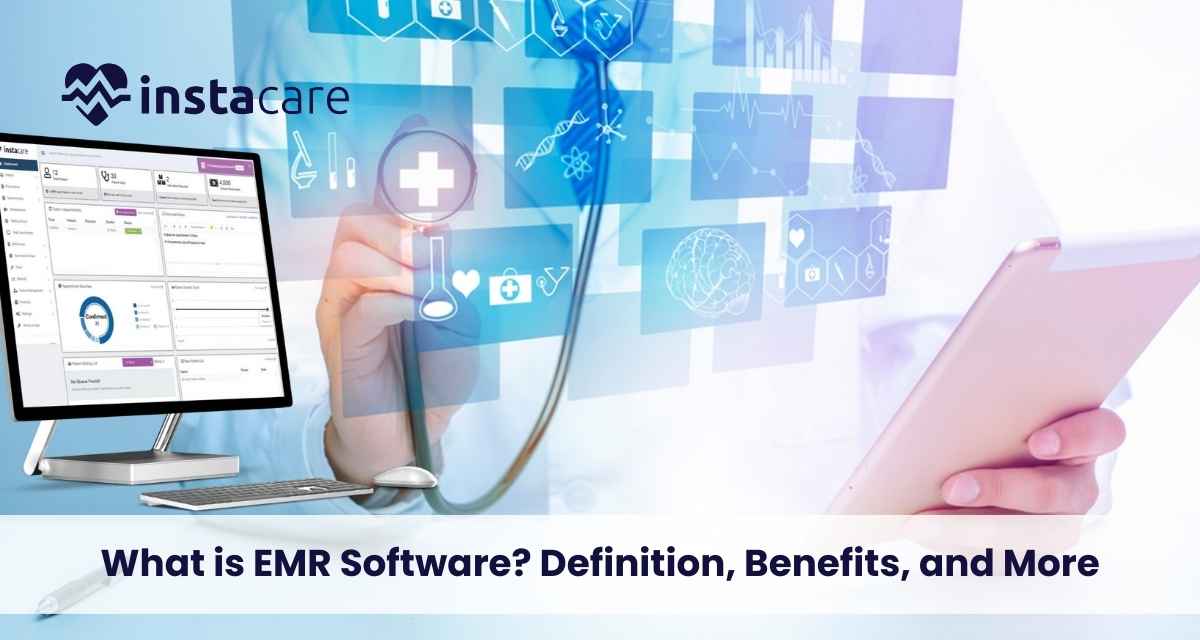Last updated on Friday, 6, September, 2024
Table of Contents
What is EMR Software? Definition, Benefits, and More
Advances in technologies have changed almost every aspect of healthcare and one of the most outstanding innovations is the EMR software. EMR software is primarily developed to cater to the management of efficient patient records and the effectiveness of the health care system. The following article will define EMR software; and discuss additional information about what it does and why it is considered beneficial in the area of healthcare.
What You Must Know About EMR Software?
EMR software means electronic systems that are utilized by healthcare providers to maintain and document the details of the patients. While traditional paper record-keeping involves the documentation of a patient’s records in writing, EMR software is a computer-based system where records can be written, updated, and shared electronically.
Key Features of EMR Software Include:
Patient Information Management: Storage of patients’ information and their health status, their previous treatment and diagnosis, results of the tests.
Appointment Scheduling: Scheduling of patient’s appointments, and any kind of reminders.
Clinical Documentation: Documenting the height and weight of patients / General wellness and observations of patients.
Medication Management: Prescription records and medication records.
Reporting and Analytics: Reporting and evaluating data to enhance better health cares all over the world.
Benefits of EMR Software
Improved Efficiency
EMR software helps deliver to reduce the overwhelming heath care operation. This way, the healthcare providers will be able to find the patient records without having to search through paper based files. These efficiencies include quicker decision making since there are few documents to flounder and a significant cutting down of paper work together with other administrative work.
Enhanced Patient Care
Electronic health information ensures that the doctors and other health care practitioners are able to have an up to date record of the patients’ data, for proper treatment. Another aspect is the improvement of the communication between providers as patient’s records can be exchanged between different providers and within different facilities using EMR software. This leads to the right diagnosis of ailments and suitable treatment regimens, which enhances the patients’ results.
Less Amount of Mistakes or Errors Made
Electronic records cannot be easily misplaces, are not written in messy hand writing and do not contain math entry mistakes. These risks are worked around by most EMR software through the use of templates as well as checklists that are automatically worked on at the background. This eliminates possibilities of mistakes on patients’ records such as wrong prescription or wrong treatment to be given to the patient.
Better Data Security
EMR software helps to secure patient’s information through integration of such measures as encryption and access control measures. Compared to conventional paper-bases or records which may be misplaced, stolen or lost easily, records on the computer are well protected. This aid in meeting of legal requirements such as, the HIPAA (Health insurance portability and accountability Act)-protection of patient information.
Streamlined Communication
A very useful component of EMR systems is the use of communication tools that are integrated into it such as message and alert systems to improve the flow of communication in the provision of care. The coordination of care can be enhanced by integration of patient information across the various channels, meaning all the parties involved will be in apprise of the patient status and probably the planned treatment regimen.
Enhanced Patient Engagement
Some of the EMR systems allow patients to gain access to their health records, their test results and interact with providers. This makes patients to be fully involved in management of their health hence improving the chances of patients sticking to their planned treatment.
Efficient Billing and Coding
Some features included in EMR software include medical billing and coding where the software also generates claims and submits those to insurance companies. It also reduces the chances of making billing errors and thus enhances the reimbursement process making the financial side of the health delivery system faster.
Here Are Some Additional Insights
Integration with Other Systems
It was establish that most of EMR systems are developed with built-in interoperability with other related healthcare technologies including EHR systems, laboratory information systems, and imaging systems. It means that through integration it easier to see the comprehensive health of a given patient and how different specialists are able to provide effective treatment.
Customization and Scalability
Because of its modularity, the EMR software can be adopted to suit the needs of a small and single practitioner’s office, an expansive health facility, or multihospital system. Flexibility allows that ability for the software to expand or expand as the organization grows by having to accommodate more patients or new requirements.
Challenges and Considerations
The EMR software has lots of advantages and they are also associated with certain difficulties. Its application is quite challenging and may prove to be an expensive affair since a considerable level of training has to be done among the members of staff coupled with the disruption of the traditional systems. Also, there is the element of risks; data leakage and systems failure because of overreliance in technology. Based on the experience of implementing EMR solutions in a number of healthcare organizations, it has been critical to carry out a thorough analysis of various solutions with regard to their cost, functions, and support provided by the vendors.
Some Of The Future Trends
The future of EMR software is likely to involve further advancements in technology, including:
Artificial Intelligence (AI): AI can improve functionality of EMR systems with the help of predictive analytics, decision support tools, and document production.
Interoperability: Enhanced information exchange formats will reduce the barriers to Flow of information between the different health care settings.
Patient-Centric Features: Mobile elements such as patient communication and participation will remain enlarged together with the individualization of health management elements.
Conclusion
EMR software is a revolutionary advancement for patient record keeping since it comes with many advantages that make delivery of healthcare more effective, accurate and secure. The use of electronic medical record systems enhances patient care, operational efficiency and management, as well as enhances decision making. However, there are still existing problems and despite this, the future of EMR technology still holds potential to improve the quality of health care delivery and patients’ condition. This paper aims to guide both the healthcare givers and recipients, how to tackle this relatively unknown track of utilizing EMR software by identifying its basic functions effectively in coming generations of healthcare system.
FAQ’s
EMR software – what is it and how does it function?
EMR (Electronic Medical Record) is software utilized by healthcare providers for the enhancement, management, and sustenance of records of patients in an electronic manner. It has sections to put down diseases, illnesses, therapies, and investigations. EMR software is used to simplify patient information documentation, reduce errors, and make records more available to professionals.
What are the primary benefits that are associated with the use of the EMR software?
In terms of objectives, the primary use of EMR software is to increase orderliness, irretrievability, coordination, and speed of patient information. It also decreases paperwork, decreases the likelihood of mistakes, and enhanced the patient care through technology, incorporating full medical records of the patients that are easily accessible.
Is there any downside to using EMR software?
Like any other software, EMR software has its merits with some demerits some of which include; the initial cost of implementing the software might be expensive, the software requires constant update and there is always the risk of its data being hacked. Finally, some people may take time to learn how best to use this technology or may resist the change. Selecting a good reliable system to be implemented and to be trained and supported effectively will address these issues.



